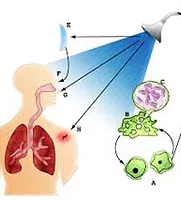A new analysis of 100 million Medicare records from U.S. adults aged 65 and older reveals rising healthcare costs for infections associated with opportunistic premise plumbing pathogens, which can live inside drinking water distribution systems, including household and hospital water pipes.
A team led by researchers from the Friedman School of Nutrition Science and Policy at Tufts University and Tufts University School of Medicine found that between 1991 and 2006, more than 617,000 hospitalizations related to three common plumbing pathogens resulted in around $9 billion in Medicare payments--an average of $600 million a year. The costs may now exceed $2 billion for 80,000 cases per year, write the study authors. Antibiotic resistance, which can be exacerbated by aging public water infrastructure, was present in between one and two percent of hospitalizations and increased the cost per case by between 10 to 40 percent.
"Premise plumbing pathogens can be found in drinking water, showers, hot tubs, medical instruments, kitchens, swimming pools, almost any premise where people use public water. The observed upward trend in associated infections is likely to continue, and aging water distribution systems might soon be an additional reservoir of costly multidrug resistance," said lead study author Elena Naumova, Ph.D., professor at the Friedman School and Director of the Initiative for the Forecasting and Modeling of Infectious Disease at Tufts University. "This is a clear call for deepened dialogue between researchers, government agencies, citizens, and policy makers, so that we can improve data sharing and find sustainable solutions to reduce the public health risks posed by these bacteria."
The study was published in the Journal of Public Health Policy on Sept. 12.
State and federal oversight has ensured generally safe and good quality public drinking water in the U.S. However, premise plumbing systems, the pipes and fixtures in homes and buildings that transport water after delivery by public water utilities, are largely unregulated, which can lead to inconsistent monitoring and reporting of potentially harmful deficiencies. This is highlighted by the ongoing crisis in Flint, Michigan, where a water source change, aging pipes, and lack of corrosion control not only exposed thousands of children to elevated lead levels in drinking water, but is also thought to have triggered an outbreak of Legionnaire's disease that led to 10 deaths.
Opportunistic premise plumbing pathogens, such as the bacteria that causes Legionnaire's disease, Legionella pneumophila, can thrive in low-nutrient conditions and grow as biofilms on the inner surfaces of pipes. Biofilms allow these pathogens to resist disinfectants and environmental stressors, and aid in the spread of antibiotic resistance and virulent genes. As water distribution systems age, their susceptibility to contamination increases. However, few large-scale studies have examined the economic and public health burden of these bacteria.
To investigate, Naumova and her colleagues analyzed 100 million medical claims from 1991 through 2006 from the US Centers for Medicare and Medicaid Services, which provides exhaustive coverage of Medicare beneficiaries aged 65 and older. The team focused on hospitalizations related to three opportunistic premise plumbing pathogens: Legionella pneumophila, Mycobacterium avium, and Pseudomonas aeruginosa, which can cause a range of serious respiratory, systemic, or localized infections, particularly in vulnerable populations such as the elderly or immunocompromised individuals.
Based on clinical diagnostic codes, reported cases for all three infections totaled 617,291, with the majority due to pneumonia caused by Pseudomonas and related bacteria (560,504). Legionnaire's disease and Mycobacteria infections accounted for 7,933 and 48,854 cases respectively. On average, each hospitalization represented $45,840 in Medicare charges and $14,920 in payments. Antibiotic resistance, recorded in a little under two percent of cases, increased the average costs to $60,870 in Medicare charges and $16,690 in payments per case.
Source: Tufts University, Health Science Campus




